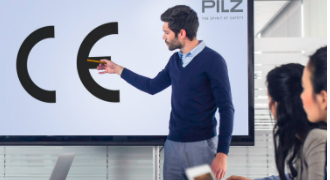Conquering Europe: A Guide to Selling Your Product in the European Market
Understanding the European market is crucial for successfully selling your product in this diverse and dynamic region. Europe offers a wide range of opportunities, but it also presents unique trends and challenges that require careful consideration.
One key opportunity in the European market is its size and diversity. Europe is home to over 700 million people, encompassing various countries, cultures, and economic landscapes. This diversity provides a vast consumer base with different needs and preferences. By conducting market research and understanding the specific characteristics of each target market, you can identify niche opportunities and tailor your product offerings accordingly.
Keeping up with the latest market trends is also essential. Europe is known for its focus on sustainability, innovation, and quality. Consumers in Europe are increasingly conscious of the environmental impact of products and seek sustainable and eco-friendly options. Additionally, the growing demand for digitalization and e-commerce presents opportunities for online sales and digital marketing strategies. Staying informed about these trends enables you to adapt your product and marketing approaches to align with consumer expectations.
However, the European market also poses certain challenges. One significant challenge is the cultural and linguistic diversity across the region. Each country has its own language, cultural norms, and consumer behaviors. It’s important to invest in market research and adapt your marketing strategies to resonate with local consumers. This may involve translating your website and marketing materials, localizing your messaging, and considering cultural sensitivities.
CE Certification: Ensuring Compliance and Building Trust in Europe

CE certification plays a crucial role in selling your product in the European market. It is a mandatory certification that demonstrates compliance with European Union (EU) safety, health, and environmental protection standards. Attaining CE certification is not only a legal requirement but also essential for building trust and credibility among European consumers.
CE certification signifies that your product meets the necessary safety and quality standards outlined by the EU. It demonstrates your commitment to delivering safe and reliable products to the European market. Without CE certification, your product may face barriers to entry, including restricted market access and potential legal consequences.
To obtain CE certification, you need to undergo a conformity assessment process, which varies depending on the product category. This process typically includes testing, documentation review, and evaluation of compliance with relevant EU directives. Engaging with a notified body, a third-party organization authorized by the EU, is often necessary to guide you through the certification process. They will assess your product, review documentation, and issue the CE mark upon successful compliance.
CE certification not only ensures compliance but also enhances your product’s marketability. European consumers recognize the CE mark as a symbol of product safety and quality. It gives them confidence in your product and increases the likelihood of purchase. Displaying the CE mark prominently on your product, packaging, and marketing materials helps build trust and differentiate your product from non-compliant alternatives.
It’s important to note that CE certification is not a one-time process. Ongoing compliance is necessary, as periodic audits and assessments may be conducted to ensure continued adherence to the required standards. Staying updated on regulatory changes and maintaining proper documentation and records are essential for maintaining CE certification.
All in all, understanding the European market, its opportunities, trends, and challenges is crucial for successfully selling your product in Europe. Obtaining CE certification ensures compliance with EU standards and builds trust among European consumers. By understanding market dynamics, adapting your strategies, and complying with relevant regulations, you can navigate the European market and position your product for success.
Distribution and Logistics: Navigating the European Supply Chain

Distribution and logistics play a vital role in selling your product in the European market. Navigating the complex European supply chain requires careful planning and efficient management to ensure your products reach customers in a timely and cost-effective manner.
One of the first steps in managing distribution and logistics is identifying the most suitable distribution channels for your product. Europe offers a diverse range of distribution options, including direct-to-consumer sales, e-commerce platforms, retail partnerships, and wholesalers. Research the market and assess which channels align with your target audience, product type, and business goals.
Establishing strong partnerships with reliable logistics providers is crucial for seamless operations. Seek out logistics partners with expertise in European markets and a proven track record of delivering goods efficiently. Collaborating with partners who have well-established networks and a deep understanding of local regulations and customs procedures will help you navigate the complexities of the European supply chain.
Efficient inventory management is essential for optimizing distribution in the European market. Striking the right balance between maintaining sufficient stock levels and minimizing excess inventory is key to meeting customer demand while controlling costs. Leverage technology and data analytics to forecast demand, monitor inventory levels, and plan replenishments effectively.
Warehousing and fulfillment also play a critical role in the European supply chain. Consider setting up local warehouses or partnering with third-party logistics providers to ensure proximity to your target markets. This allows for faster order fulfillment, reduced shipping costs, and improved customer satisfaction. Implement robust order fulfillment processes, including order tracking, packaging, and labeling, to streamline operations and deliver a positive customer experience.
Another consideration is managing customs and import/export regulations when distributing products across European borders. Familiarize yourself with customs requirements, tariffs, and trade agreements specific to each country. Ensure compliance with all necessary documentation, including customs declarations and certificates of origin, to avoid delays and penalties.
Embracing technology and automation can greatly enhance distribution and logistics efficiency. Implementing inventory management systems, transportation management software, and order tracking systems can streamline processes, improve visibility, and reduce errors. Adopting these technologies enables better coordination, real-time tracking, and data-driven decision-making throughout the supply chain.
Overall, navigating the European supply chain requires effective distribution and logistics management. Identifying suitable distribution channels, establishing strong partnerships, optimizing inventory management, managing customs requirements, and leveraging technology are key to successful product distribution in the European market. By streamlining operations and ensuring timely delivery, you can meet customer expectations, enhance customer satisfaction, and gain a competitive edge in the European market.
Localization Strategies: Adapting Your Brand for European Consumers

Localization is a critical component of successfully selling your product in the European market. European consumers have diverse cultural backgrounds, languages, and preferences, and adapting your brand to resonate with their unique needs is essential for success.
Start by conducting thorough market research to understand the specific preferences and behaviors of your target audience in different European countries. This includes gaining insights into their cultural norms, consumer habits, and values. Use this information to tailor your brand messaging, product positioning, and marketing campaigns to align with the local culture.
One key aspect of localization is language adaptation. Translating your website, product descriptions, and marketing materials into the local languages spoken in your target markets is crucial for effective communication. Localization goes beyond translation and includes adapting content to consider local idioms, phrases, and colloquialisms. Hiring native speakers or professional translation services can ensure accurate and culturally appropriate translations.
Visual elements also play a significant role in localization. Adapt your branding, packaging, and imagery to align with local preferences and aesthetics. This may involve adjusting colors, graphics, and design elements to resonate with the local culture. Consider cultural symbols, icons, and imagery that have positive associations with your target audience.
Moreover, incorporating local market trends and preferences into your product offering can significantly enhance its appeal to European consumers. Research consumer insights, stay updated on market trends, and identify local product variations or features that may better suit the European market. This could involve adjusting product sizes, flavors, or packaging to align with consumer expectations.
Localization also extends to marketing and advertising strategies. Develop targeted campaigns that speak directly to European consumers’ needs and aspirations. Consider local media channels, social media platforms, and advertising formats that are popular in each European country. Collaborate with local influencers, brand ambassadors, or content creators who have a strong presence in your target markets to amplify your brand message and gain credibility.
In conclusion, localization is crucial for successfully selling your product in the European market. By adapting your brand messaging, language, visual elements, product offering, and marketing strategies to align with the local culture and preferences, you can establish a strong connection with European consumers. Localization demonstrates your commitment to understanding and serving their specific needs, ultimately driving brand loyalty and boosting sales in European markets.

















